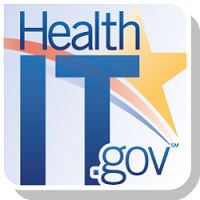 By Dr. Vindell Washington / Former National Coordinator for Health IT ,
By Dr. Vindell Washington / Former National Coordinator for Health IT ,
Tricia Lee Wilkins, Pharm.D., Ph.D. / Pharmacy Advisor and Health IT Specialist , and
Aisha Hasan / Senior Advisor to the National Coordinator
Twitter: @ONC_HealthIT
Over the past 8 years, the Office of the National Coordinator for Health Information Technology (ONC) – in collaboration with our federal partners and the private sector – has ushered in an era of widespread health information technology (IT) adoption and use throughout the country. This historic advancement has set the stage for us to transition our focus to the seamless and secure sharing of electronic health information.
But, as the Nationwide Interoperability Roadmap made clear, we knew we couldn’t achieve this transition on our own. That’s why Secretary Burwell announced in February 2016 that companies that provide 90 percent of hospitals their electronic health records, as well as the largest health care systems in the country, and key professional associations and stakeholder groups, pledged to work with us to implement three core commitments toward advancing interoperability. These commitments included a critical element of the next stage of health IT innovation: helping individuals easily and securely access their electronic health information and send it wherever they wish.
Over the past year, we have sought to translate this broad objective into a tangible, person-centered example of interoperability. After extensive conversations with stakeholders, we reached consensus on a straightforward but vital use case: empowering patients to access a consolidated medication list from multiple sources in a form that is secure, easy to view, manage, store and share.
Through months of engagement and collaboration, we are thrilled that we were able to showcase the progress made thus far on this public-private effort at the Connected Health Conference in December. The live demonstration illustrated how data from the largest electronic health record (EHR) vendors in the country could be securely transmitted to user-friendly, third-party applications using Fast Healthcare Interoperability Resources (FHIR)—a set of private sector technical standards developed with the strong support of ONC.
This demonstration was just the beginning of what we can achieve on person-centered interoperability through public-private partnerships. Participants have already discussed plans to deploy these types of FHIR-based solutions in early 2017, and how the medication list effort can expand to include the other key individual health information – like allergies, lab results, and immunizations – included in ONC’s Common Clinical Data Set.
And, in a fitting capstone to my service as National Coordinator, ONC met with Vice President Joe Biden earlier this month with several of our public and private sector partners to discuss how these efforts can drive advances in cancer care, as well as the Precision Medicine Initiative, delivery system reform, combating the opioid crisis, and beyond. All agreed that by working together, we can accelerate innovation and empower individuals to better manage their health.
This post was originally published on the Health IT Buzz and is syndicated here with permission.
